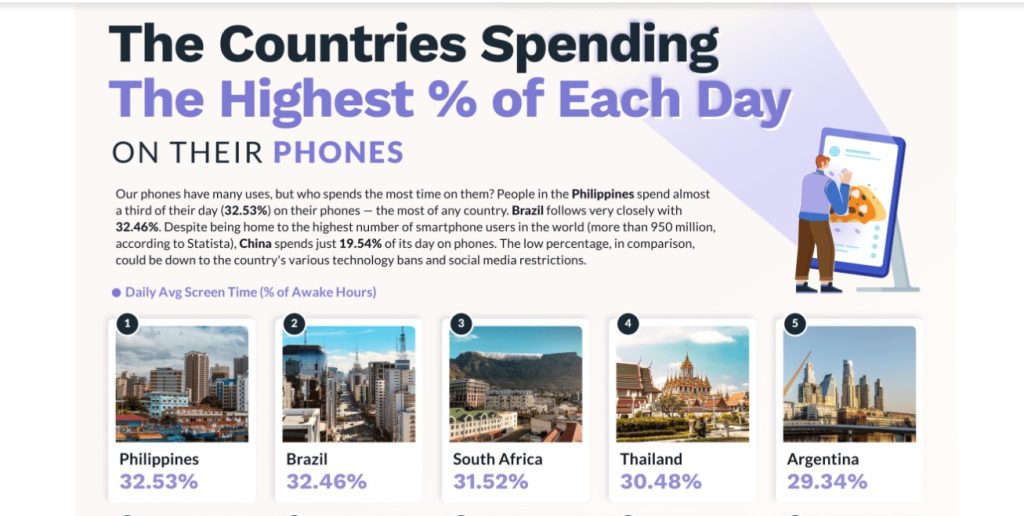The digital era has escalated our screen time significantly. Today, screens dominate our lives as essential tools for communication, work, education, and entertainment. This article will explore the average screen time and its usage in different countries, emphasizing the Philippines’ exceptional position as the nation with the highest average screen time worldwide.
The Average Screen Time and Usage by Country
With the evolution of technology and the proliferation of smartphones and digital devices, average screen time has increased remarkably around the world. The majority of adults spend an average of 3 to 4 hours per day on their phones. However, there are significant variances across countries.
According to data compiled by Electronicshub.org, Brazil and China take the lead, with the average person spending more than 5 hours per day on their digital devices. The U.S. and the U.K follow closely, both averaging around 4.5 hours per day. The pattern is similar in Italy, Spain, and India, where individuals spend approximately 4 hours a day.
These screen time trends reveal how embedded technology has become in everyday life, spanning multiple domains from work to education and leisure activities.
The Philippines: An Exception to the Rule
Despite the aforementioned statistics, the Philippines outpaces all other nations in screen time. According to a report by YugaTech, Filipinos spend an average of 10 hours and 56 minutes on their screens each day, which is more than double the global average. This data positions the Philippines as the country with the highest average screen time globally.
Several factors contribute to this high screen time in the Philippines. First, Filipinos are renowned for their social nature, which translates to more time spent on social media platforms like Facebook, Twitter, and Instagram. These platforms account for a significant proportion of the average screen time. Secondly, the growth of digital media and streaming platforms like Netflix and YouTube has contributed to longer viewing hours. Lastly, the rise in digital workspaces and e-learning due to the COVID-19 pandemic has further amplified screen time.
Implications and Consequences
While increased screen time provides numerous benefits, such as convenient communication and access to information, it is not without its drawbacks. These include potential health risks like digital eye strain, sleep disturbances, and even addiction.
Furthermore, excessive screen time can impact physical health negatively, promoting sedentary behaviors that may contribute to obesity and related health problems. Moreover, excessive exposure to screens can lead to mental health issues, including increased levels of anxiety and depression.
As digital devices become more integral in our lives, understanding how and why we use them is crucial. While the Philippines’ screen time statistics are notably high, it is a global issue that requires thoughtful attention and strategic action. Balancing screen time with other healthy activities and implementing effective digital wellbeing strategies is essential to mitigate the potential risks associated with excessive screen usage.









Cutie
Galing grabe
Astig